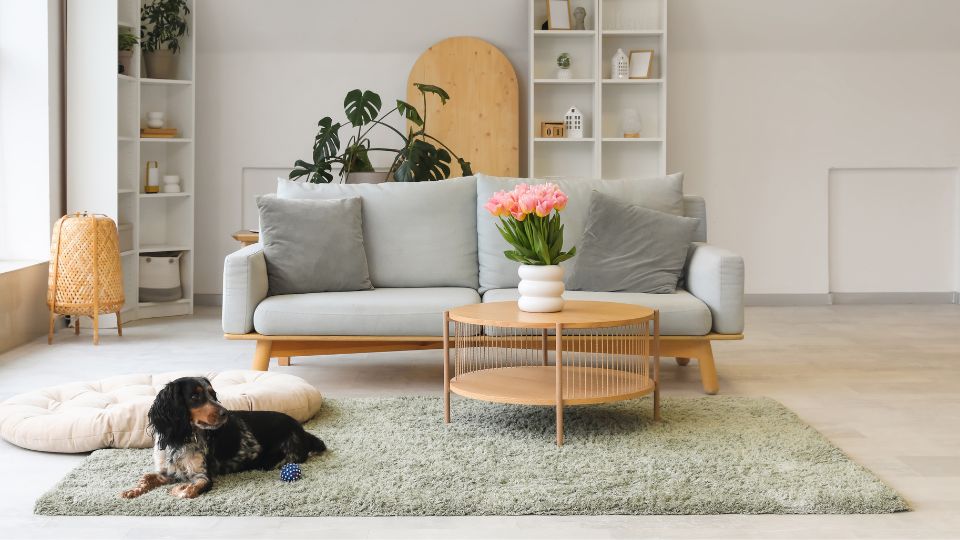The influence of pets on interior design decisions

A new survey reveals that companion animals play an important role in determining home aesthetics.
Design simulator tool Redecor found that over three-quarters (78%) of American pet parents admit they consider aesthetics within a budget when purchasing pet accessories. They also agree that their furry friends are an important factor in determining their home decor decisions.
However, almost a quarter (23%) were not willing to spend over $25 (€23.07) on accessories, and 85% weren’t willing to shell out over $100 (€92.29). Only a small percentage of pet owners (12%) cited a willingness to splurge up to $500 (€461.47).
The survey, which received 7,300 responses in May 2024, concluded that as many as 40% admitted to hanging a customized portrait of their pets in their homes.
Purchasing pet outfits was more common among dog parents (47%) than cat owners (32%).
Pets around furniture
Nearly half of the respondents (48%) reported having to toss out a piece of furniture due to damage caused by their pets. Over two-fifths of pet owners (42%) refrained from purchasing items for their homes because they were concerned their pets would ruin them.
More than 8 out of 10 (82%) admitted not allowing pets on their beds, with 1 in 10 saying they don’t allow them in their bedrooms at all. Nearly half of respondents (47%) did not allow their companion animals (especially cats) on tables, and over half (54%) said they don’t let them on countertops.
However, 30% said they did not have any ‘off-limit’ furniture or parts of their homes for their pets.
Home aesthetics
17% of those surveyed agreed they would choose their pets to match their existing design choices, with an additional 78% admitting considering aesthetics when buying pet beds, scratchers and toys and how they would fit in with their home decor.
When it comes to arguments partners have had regarding their pets, 6% say they quarrel about where the litter box is placed in the home, 15% about hair on the furniture, 17% about odor and only 2% about the aesthetics of pet beds and toys.
